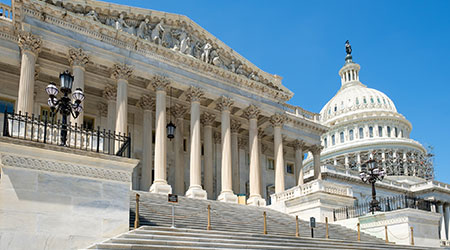
House Proposal Would Shift Energy Star to DOE
November 22, 2017
Responsibility for the Energy Star program would shift from the U.S. Environmental Protection Agency to the U.S. Department of Energy under a proposed bill, which would also make significant changes in the process of setting Energy Star specifications.
The measure — called “The Energy Star Reform Act of 2017” — has not been formally introduced into the House. But a so-called discussion draft was reviewed by a House of Representatives Energy and Commerce subcommittee.
The author of the bill, Rep. Bob Latta, R-Ohio, called the hearing “a starting point for reforming the Energy Star program,” according to Door & Window Market magazine.
But Rep. Frank Pallone, D-N.J., said he had serious concerns about the proposal, according to DWM. “And I have one question: what problem are we trying to solve with this proposal? The Energy Star program is extremely successful, reducing energy consumption and saving consumers money.”
In written testimony, Alliance to Save Energy President Kateri Callahan expressed opposition to the idea of shifting responsibility to DOE. “While the Alliance is open to shifting specific responsibilities to DOE, a wholesale move of the program to DOE, as the bill proposes, could severely disrupt the administration, growth and promotion of ENERGY STAR. The institutional knowledge, expertise and deep partner relationships that have been established between EPA and its more than 16,000 partners would be jeopardized. The Alliance is particularly concerned about such a shift at a time when funding for ENERGY STAR is under threat. The discussion draft is silent on funding, so it is unclear how DOE could secure the funding to administer the program effectively.”
The House earlier approved a 2018 funding measure that cut Energy Star funding by 26 percent. The Trump Administration had proposed eliminating the program.
Energy Star estimates that its efforts saved American households and businesses $430 billion on utility bills from 1992 to 2015, while reducing greenhouse gas emissions by 2.7 billion metric tons. More than 27,000 buildings had earned Energy Star certification by the end of 2015, saving nearly $3.8 billion on utility bills, according to EPA.
Another significant change would require Energy Star to treat changes to Energy Star specifications as if they were proposed regulations. That would mean a lengthy review process for each change in specifications, with publication in the Federal Register and a lengthy period for public comment.
Callahan argued against that change, noting that it could take years to get specifications approved and wasn’t appropriate for a voluntary program. The idea “threatens to bog down the program, leaving standards far behind product innovation, which would undermine consumer confidence in ENERGY STAR and likely serve as a disincentive for companies to participate and introduce new ENERGY STAR-compliant products.”
A third part of the proposed bill would provide liability protection for manufacturers that participate in the program and that have products that are out of compliance, according to DWM.
This Quick Read was submitted by Edward Sullivan, editor of Building Operating Management magazine, edward.sullivan@tradepress.com. Click here to read more about energy efficiency on Facilitiesnet.com.
Next
Read next on FacilitiesNet












